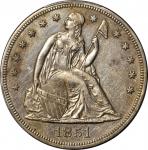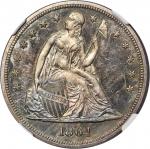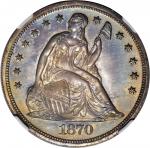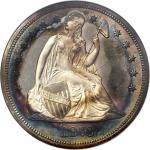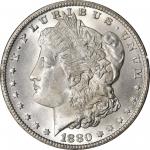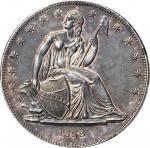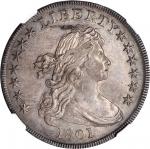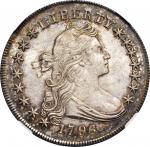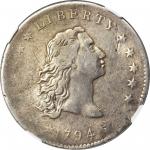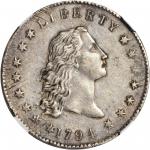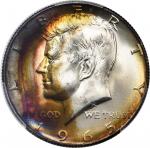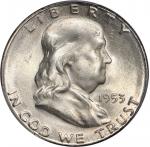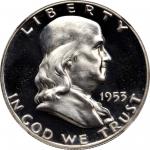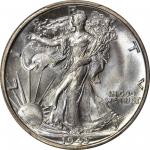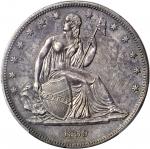1839 Gobrecht Silver Dollar. Name Removed. Judd-104 Restrike, Pollock-116. Rarity-3. Silver. Reeded Edge. Die Alignment IV. Proof-61 (PCGS). This is a nicely toned example of the elusive 1839 Gobrecht dollar, a popular issue steeped in mystery. A bold strike has imparted excellent definition to most of the design elements with just a touch of softness noted at the peripheries. Pleasingly toned, blended lavender, rose, and gold cover both sides with brief highlights of cobalt. Rather smooth at first glance, it is only with the aide of a glass that the small ticks and handling marks that evenly cover both sides become apparent. Even so, these seem minor in the context of the grade and the overall impression is quite pleasing.<p>This coin would do equally well in an advanced silver dollar type set or a specialized collection of the challenging Gobrecht series. The strong mirrors and fine granularity seen within the eagles beak mark this as a fairly late state restrike, perhaps struck as late as the 1870s. The original 1839 dollars, coined in the last week of that year, "are in Alignment IV, have weak mirrors, more [semi-prooflike] than fully [prooflike], and typically come with a weakly struck foot," according to gobrechtdollars.com, a website built by John Dannreuther, Saul Teichman, and Craig Sholley. Restrikes, by contrast, show "a strong mirror from polishing" and are better struck, "generally with a fully struck foot." Restrikes are "also rather easily distinguished from Originals by the very granular (rusty) letters and eagle," according to their study of the issue. This specimen shows the granular texture within the eagles beak, as well as somewhat truncated letter forms from extensive polishing, easily seen on the somewhat wavy outlines of the letters of ITED rather than the well-defined straight line peripheries of those letters on originals. The die line above the letter T in UNITED is very bold and all visible cracks are extremely light, largely polished away in this state. The crack at ITE is virtually absent, but the crack at MERI is discernible with patience. The abuses of James Ross Snowdens administration of the Philadelphia Mint provoked a clamor for change, as collectors realized that many coins they had cherished were still being restruck for well-connected dealers. From the initial program to trade restruck rarities for Washington medals to stock Snowdens cabinet at the Mint, the restriking policy spun out of control, resulting in an edict from Mint Director James Pollock in 1866. The Pollock circular letter stated that restriking backdated pieces was no longer acceptable, no coins or patterns could be struck in off metals, and the Mint would sell only current issues to collectors. The circular letter also fixed the prices for patterns and Proof sets and ordered that all money received would be "part of public money," as Mint employees "are expected to refrain from dealings in this line, or affording aid to friends or dealers outside."<p><p>Pollocks rules were ignored, certainly after he left his position in 1866 and likely before. When Henry R. Linderman took his place in 1867, he fully availed himself of not only the opportunity to strike anything he wanted for his own collection, but also to continue the practice of striking special items for others for profit. Unusual mulings, new dates in obsolete series (like the 1868 large cent), and off metal strikings of old favorites became the norm, continuing even after Lindermans 1879 death and into the superintendency of A. Loudon Snowden.<p><p>Two major varieties of silver 1839 Gobrecht dollars with the starless reverse were produced: reeded edge Judd-104 and plain edge Judd-105. Judd-107 was struck from the same dies in copper, while Judd-108 (silver) and Judd-109 (copper) were struck during the Linderman era from the 26-star reverse like the one used in 1836. Judd-107 and Judd-109 are both unique, and Judd-108 is extremely rare, with just three specimens known.<p>



